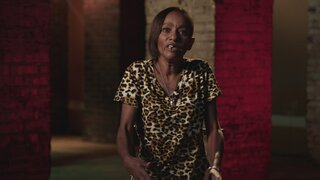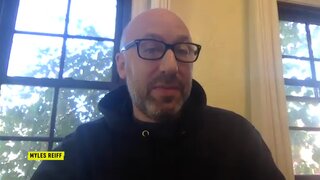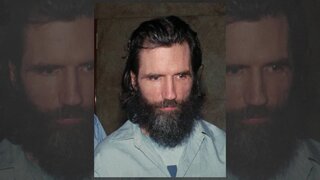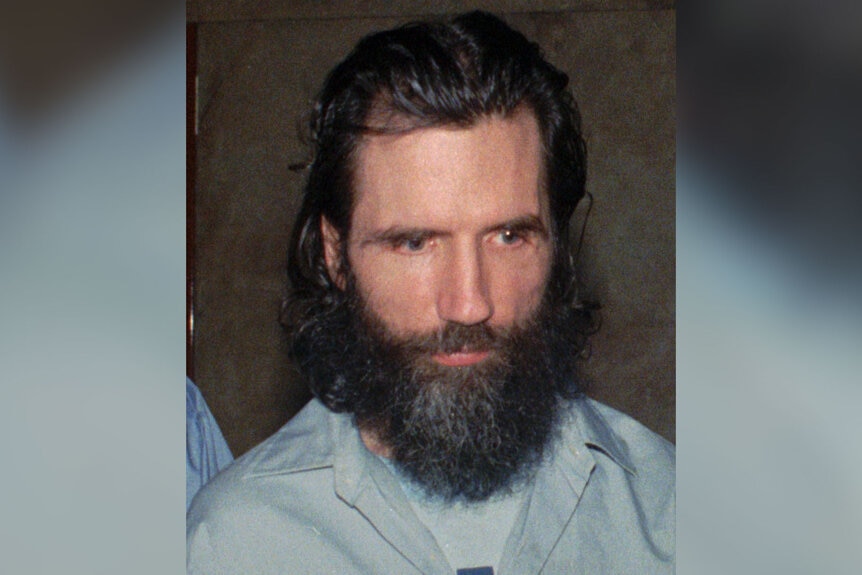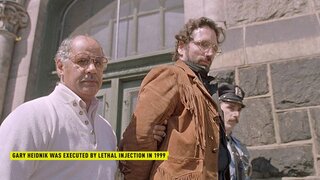Create a free profile to get unlimited access to exclusive videos, breaking news, sweepstakes, and more!
After Surviving ‘House Of Horrors,’ Where Are ‘Monster Preacher’ Gary Heidnik’s Victims Today?
Preacher Gary Heidnik kidnapped six women and held them captive in his basement, where he raped and tortured them for months in one of Philadelphia’s most horrifying crimes.
When Josefina Rivera finally got to a Philadelphia phone booth on March 24, 1987, she had a frantic message for police.
Rivera and five other women had been kidnapped and held captive by Gary Heidnik, a Philadelphia preacher who raped and tortured them in the basement of his home. He ended up murdering two.
Rivera was able to gain Heidnik’s trust and convince him to let her speak to her family. That’s when she secretly contacted authorities, freeing herself and the other women from a true nightmare that’s explored in Oxygen’s special “Monster Preacher.”
Heidnik’s crimes were so depraved — and so at odds with the wealthy, well-respected man-of-God image he presented to the world — that it ignited a media firestorm. The gruesome details of what he did to the women made headlines: He beat them and put screwdrivers in their ears to damage their hearing. He made them sleep in a tiny, boarded-up pit in the basement. He raped them daily because he wanted them all to get pregnant to satisfy his twisted idea of family.
When one died from his torture, he cooked her body parts and the captives said he made the women eat her. Heidnik’s trial for the atrocities kept his name and his victims’ names in the news — but what happened to the women after the trial ended and Heidnik was executed for his crimes?
Where are they now?
Josefina Rivera was 25 years old in November 1986 when Heidnik kidnapped her. She was a mother of three who had struggled with drug addiction and was working as a sex worker, which is how Heidnik initially got her into his home. She spent weeks alone trapped in the pit until she was joined by Sandra Lindsey, a 24-year-old with developmental disabilities who attended Heidnik’s church services. In the following weeks, they would be joined by three more women — Lisa Thomas, 19, Deborah Dudley, 23, and Jackie Askins, 18.
In the basement, Rivera began cooperating with Heidnik, even helping him torture the other women out of desperation to survive. It caused a chasm between the captives, although Rivera was clear she was doing it in an attempt to get them all out of there to safety.
Tragically, not all of the women would make it out alive. Lindsay died after she was hung from a ceiling beam by her wrist for days as a punishment. To dispose of her body, he cut it up in pieces. The women were then forced to eat something they believe contained Lindsey’s body parts.
“There was this horrible, horrible smell I will never forget in my life. It was bad … this odor was consuming,” Rivera said in the special.
Dudley was the next to die after Heidnik filled the pit with freezing water and put the women — except Rivera — in it. He then forced Rivera to place a live wire to the women’s chains, shocking Dudley in the water and eventually killing her.
“I looked and remember her doing it. It was like they were together, at some point in time, I just thought they were together,” Askins told producers. “[..] Debbie Dudley’s family, her sisters need to know exactly what happened to her in the basement."
Meanwhile, Rivera had successfully fooled Heidnik, who took her along to dispose of what was left of Dudley’s remains in the woods and on his expedition to capture another girl. He kidnapped 24-year-old sex worker Agnes Adams, which horrified the women in the pit.
Heidnik, as a reward for her loyalty, allowed Rivera to phone her family — but she instead called the cops, leading to their escape from the “house of horrors.” But although they were now free, the women had to cope with an intense trial and the trauma from their period of captivity.
Despite Rivera saving the women, the surviving three wanted to press charges against her as well as Heidnik.
“Rivera, she killed Debbie and we all could have gotten out of there alive. There was a lot of stuff she did she didn’t have to do. I just thought she took on her serial killer ideal, too. She was the oldest, she was supposed to protect us. Even though she was in a bad situation she was still supposed to protect us,” Askins told producers.
The D.A. declined to press charges against Rivera, though, as she had saved the women in the end and been forced by Heidnik to participate in the crimes — a unique form of torture for her. Heidnik, meanwhile, was found guilty and executed in 1999.
Askins attended the execution, as did Lindsey’s family and Dudley’s family.
“I went to the execution, but it was too calm and serene for me. I’m thinking execution is something like, turn around and let me shoot you. Instead they just stuck a needle in his arm. He never looked at us. Never acknowledged us. Never said he was sorry. He didn’t say anything. He didn’t even look in our direction,” Lindsey’s sister told Philadelphia Magazine in 2007.
She wasn’t the only one dissatisfied with the execution.
“I watched him die. It didn’t bring no satisfaction,” Askins told producers.
Rivera chose not to attend, telling The Philadelphia Inquirer in 2012, "It would have been better for him to sit in a 4-by-4 cell.”
All the survivors received a $30,000 settlement.
Thomas and Adams were never really able to recover from the experience and have dealt with mental health issues and addiction in the years since, according to the special.
Rivera, meanwhile, told The Philadelphia Inquirer she returned to sex work for a year after the trial, but eventually gave up both prostitution and drugs for good. She has since worked a multitude of jobs — waitress, security guard, daycare worker — and was able to reunite with her three children, who had been put up for adoption.
She lives in Atlantic City, New Jersey with her husband, Chris Lyle, and loves walking to the beach and collecting sea glass. She is still in counseling and experiences panic attacks, but told the Inquirer they are now less frequent. She still has to turn off the TV if she sees chains or handcuffs, though, according to the outlet.
Rivera is proud of her strength and how far she’s come in battling her trauma.
“For a long time I was haunted by Heidnik, by the women who died next to me. But not any longer. I hope I can inspire other victims to feel positive about the future,” she told The Mirror in 2014.
Askins still lives in Philadelphia and cleans houses. She’s close with her two sons, now adults, and is on medication to deal with her anxiety and trauma, according to a 2014 HuffPost article. She told the outlet she suffers from intense flashbacks and still can’t enter any basement.
Askins and Rivera did manage to have a meeting, as shown in “Monster Preacher” — a tense and emotional reunion.
“I ain’t gonna lie, I did have some hate for you. I blamed you for a lot of stuff that happened down there,” Askins told Rivera.
But after Rivera explained her position, Askins was able to understand her better.
“I think the plan you did was the best one… we’re here,” Askins conceded to Rivera.
The two parted on a hopeful note, believing the reunion was essential for both of them to heal.
For more on Heidnik’s crimes, watch “Monster Preacher” on Oxygen.
